Customize User Interface
- Click 'Settings' > 'General Settings' > 'User Interface'.
- The user interface tab lets you choose your preferred language, and customize the look and feel of the application.
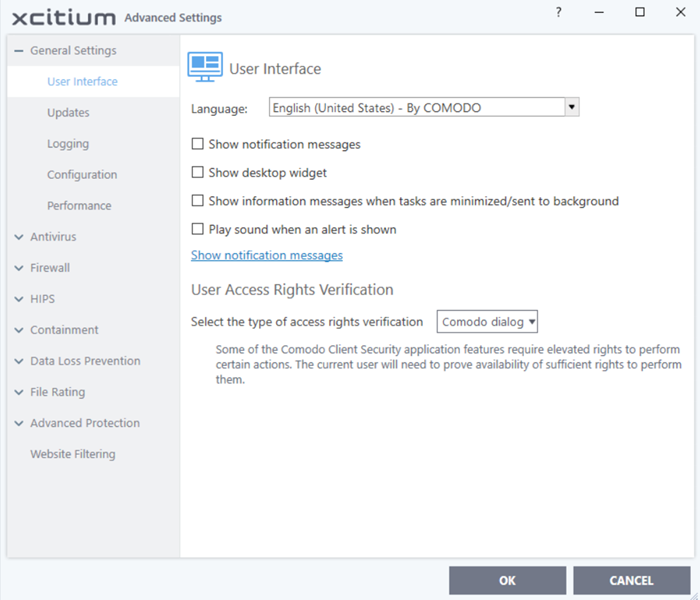
- Language
Settings - Xcitium Client Security is available in many different languages. Switch
languages by clicking the 'Language' drop-down menu.
(Default = English (United
States))
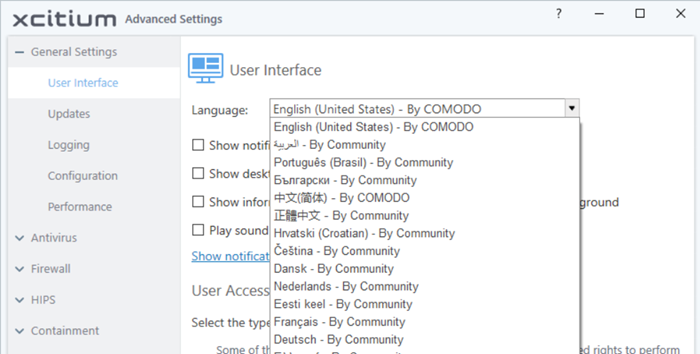
- Show
messages from COMODO Message Center - Message
center messages keep you abreast of Xcitium news and special offers.
If enabled, the messages will periodically appear as small pop-ups.
(Default
= Disabled)
- Show notification messages - XCS system notices appear in the bottom right-hand corner of your screen (just above the tray icons). They inform you about any actions that XCS is taking, and any XCS status updates. (Default = Disabled)
- Note – To view these messages, you also need to allow notifications from Xcitium in Windows
- Click the 'Show notification messages' link
- This opens the Windows 'Notifications and Actions' page
- Enable 'Get notifications from apps and other senders'
- Enable 'Xcitium Client - Security' in the senders list
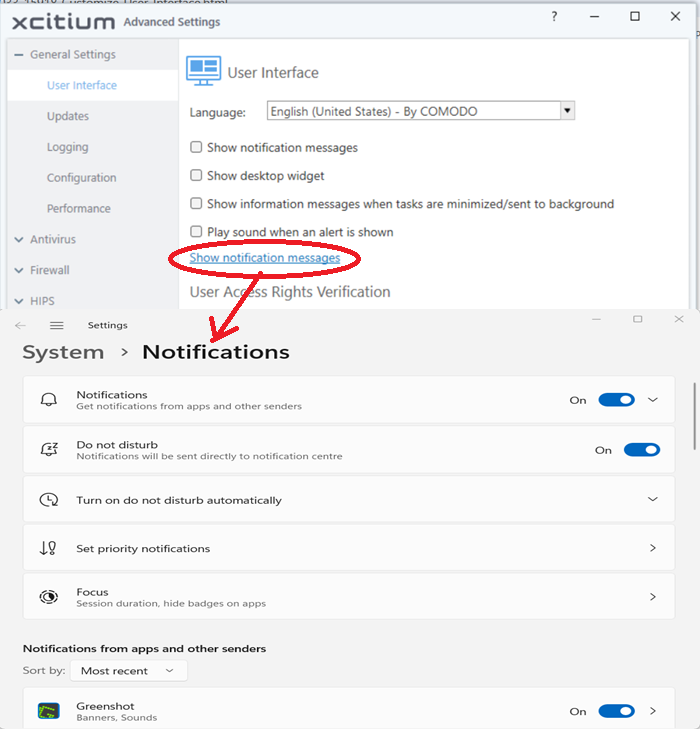
- Show desktop widget - The desktop widget shows your overall security status, outgoing and incoming traffic, and any background tasks.
The widget also contains shortcuts to open XCS, to open the task manager, to open your browsers, and to visit social network sites.
Select this checkbox if you want the widget on your desktop. (Default = Disabled)
|
Tip: You can also enable or disable the widget by right-clicking on the XCS system icon. |

See The Widget for more details.
- Show information messages when tasks are minimized/sent to background - XCS can show messages which explain what happens when you minimize or move a task:

Disable this setting if you don't want to view these messages. (Default = Disabled)
- Play
sound when an alert is shown - XCS plays a
chime when it shows a security alert. (Default =
Disabled)
- User Access Rights Verification – Xcitium Enterprise lets administrators,to enforce access protection to various tasks and settings interfaces of Xcitium Client Security. XCS verifies user's admin rights before providing access to those interfaces. You can prove your rights in two ways: by entering a password or allowing XCS to make changes in the Windows 'User Account Control' dialog. See 'Password Protection' for more on this.
- Select how XCS should check your access rights for accessing the tasks and settings interfaces. There are two options:
- Xcitium Dialog - XCS shows a dialog for you to enter computer administrator user name / password or the custom password as set by the Xcitium Enterprise administrator.
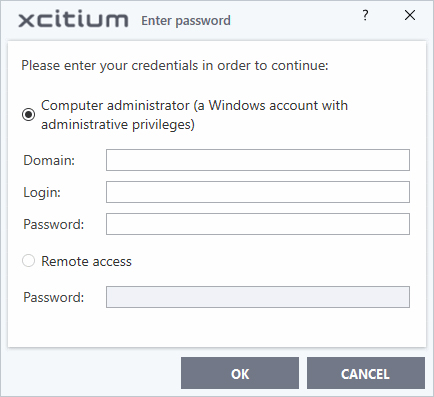
- Windows UAC – The Windows 'User Account Control' dialog is shown whenever the user tries to run an access protected task or opens a settings interface:
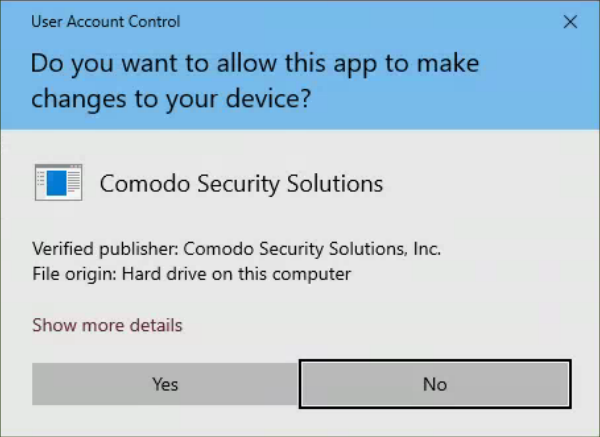
- Click 'OK' for your settings to take effect


